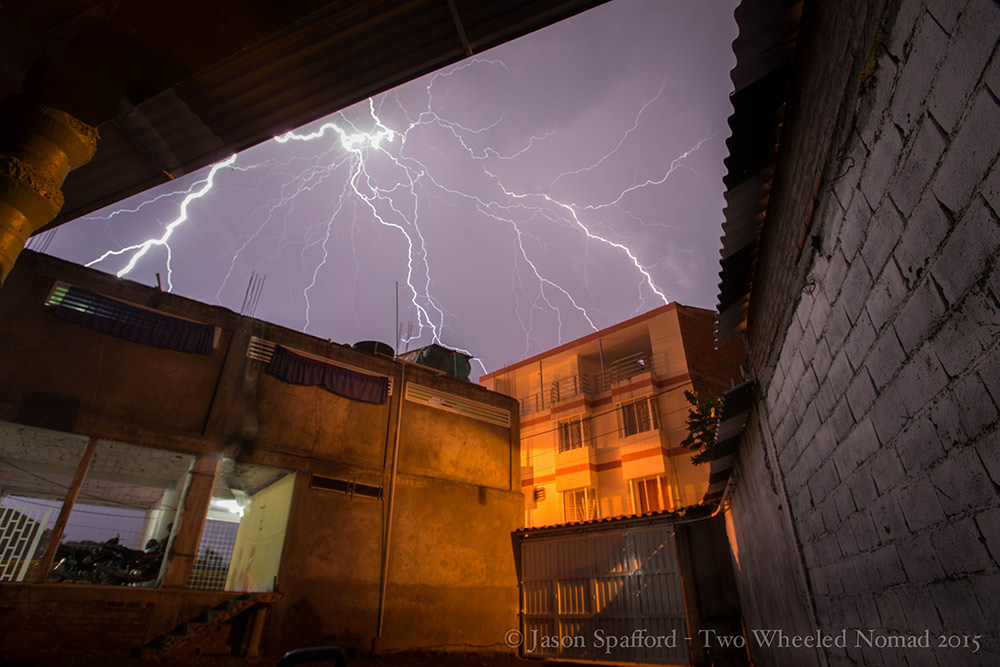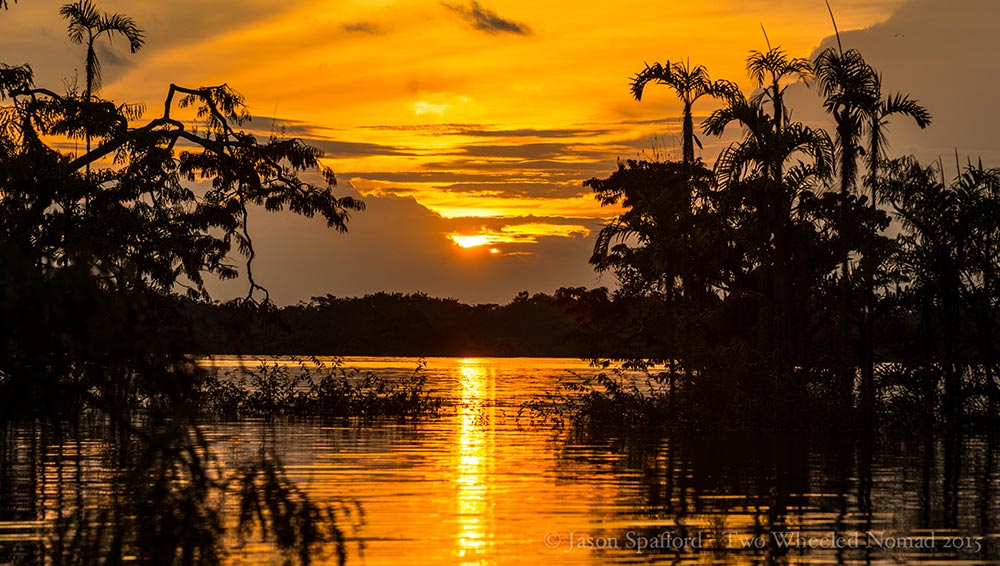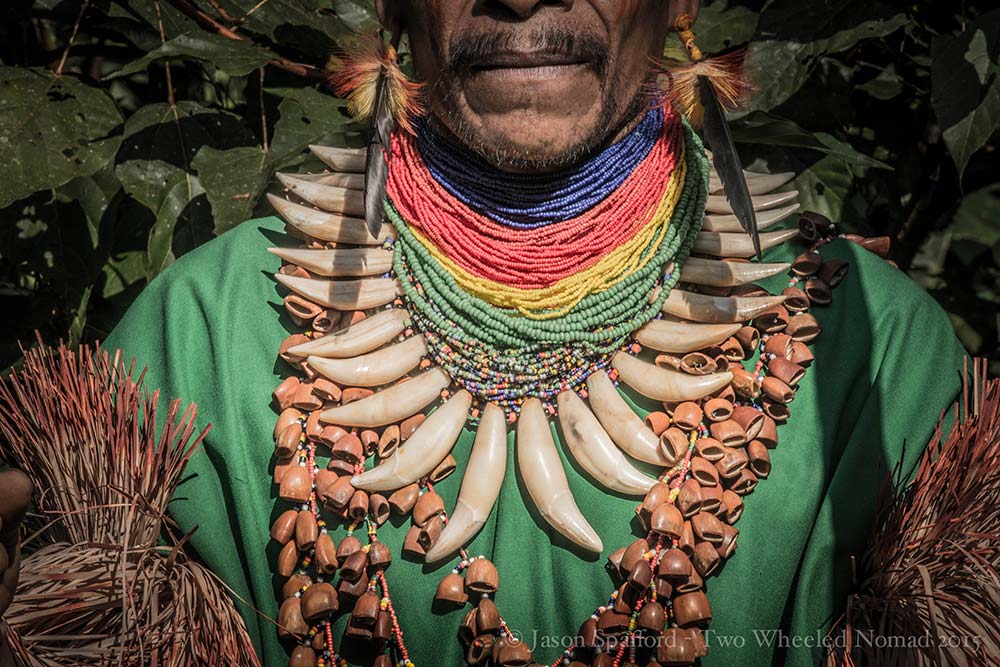Reluctantly extricating ourselves from the Ecuadorian jungle, we found ourselves in a non-lulling state of head-loll as the bus buckarooed its way back to the concrete jungle, Quito. Seated near to a pair of young males, I overheard a similarly aged girl sat adjacent pipe up: “Sorry, I’ve got to ask: why’ve you got a broom with you?”
Ecuador
12-27 Mar 2015 – A walk on the wild side: Wild thing, I think I, I think I love ya! (4 of 4)
In Luis’ back garden one bright morning, he randomly brought out a couple of snakes he’d caught for identification and study purposes, before releasing them back to where he’d scooped them up. For God’s sake, let me take hold of one. Had I been body-snatched? On the brink of flinging it away from me in a trajectory as far as one could manage with pipe-cleaner arms, I held onto my teetering nerve along with the writhing creature. To calm myself, I called it Sally; now a ‘she’, I noticed Sally possessed the temperament of a purring pussy cat; and wasn’t actually writhing at all; rather, lay quite still in my hands. She didn’t even have teeth.
12-27 Mar 2015 – A walk on the wild side: Stepping into The Jungle Book (3 of 4)
The morning greeted us to the near-imperceptible flap of a long nosed bat and gentle flurry of notes from Luis’ panpipes, our breakfast call. The previous evening’s brown scorpion—stuck to our shower curtain like a brooch—had scuttled off. Into a small wooden canoe we climbed, clasped a paddle and off the three of us went into the watery wild. Clouds haunted the surface water as we forged our way through the creases and folds of the forest’s labrinth of watery highways . A distinct and rapid tap-tap-tap, tap-tap-tap ensued. I had no idea that a woodpecker’s tongue is curled around the back of the head between the skull and skin—or that a thick, spongy bone buffers its brain—befitting a lifetime’s worth of hardcore boring with its chisel-like bill. Now there’s a bird that can’t turn around to its partner and say, ‘Sorry darling. I’ve got a headache.”
12-27 Mar 2015 – A walk on the wild side: Our short jaunt in the jungle (2 of 4)
Do you ever let your mind wander to a place just out of reach? Have you seen the fossils of extinct creatures in museums and wondered what they were really like? Have you been teased by thoughts of what our human ancestors might have seen when they first came to South America—creatures now gone from memory, represented only by the hardiest fossil record? Many have fallen into extinction but some remain. In great tracts of primeval forest, still chiefly untouched by human hands, life teems in myriad varieties, millions of nooks and crannies filled with specialised life forms, known and unknown, awaiting our curious glance. I could only begin to wonder how many weird creatures—with whom we share their fragile planet—I’d get to intimately glance. I wanted to see them all! An unattainably romantic ambition but heading into the Amazon, I was going to give it a damn good try.
12-27 Mar 2015 – A walk on the wild side: Setting the scene (1 of 4)
Background information
Terrain
Much of Amazonia is surprisingly easy to traverse. The rivers are your highways, and most of the land is flat or has a gently rolling topography. Low hills rise in some places, but these are climbable. Ravines along the intermittent streams are more of a challenge; most are spanned by slippery, narrow fallen trees in varying degrees of decomposition.
Cuyabeno reserve, our home for ten days is close to 600,000 hectares—Ecuador’s second largest region in the Amazon Basin to Yasuni’s 900,000 hectares—27,300 of which belong to the tribal communities. These are the ancestral lands of five indigenous groups: Siona, Secoya, Cofan, Kichwa and Shuar. We’d be venturing only into primary forest on ‘terra firma’—high ground that isn’t subject to seasonal flooding with frequent wellied-walks and canoe paddles through stagnant swamplands, flat forest of black and white water, and swamps of herbs and palm. Bring it on.




